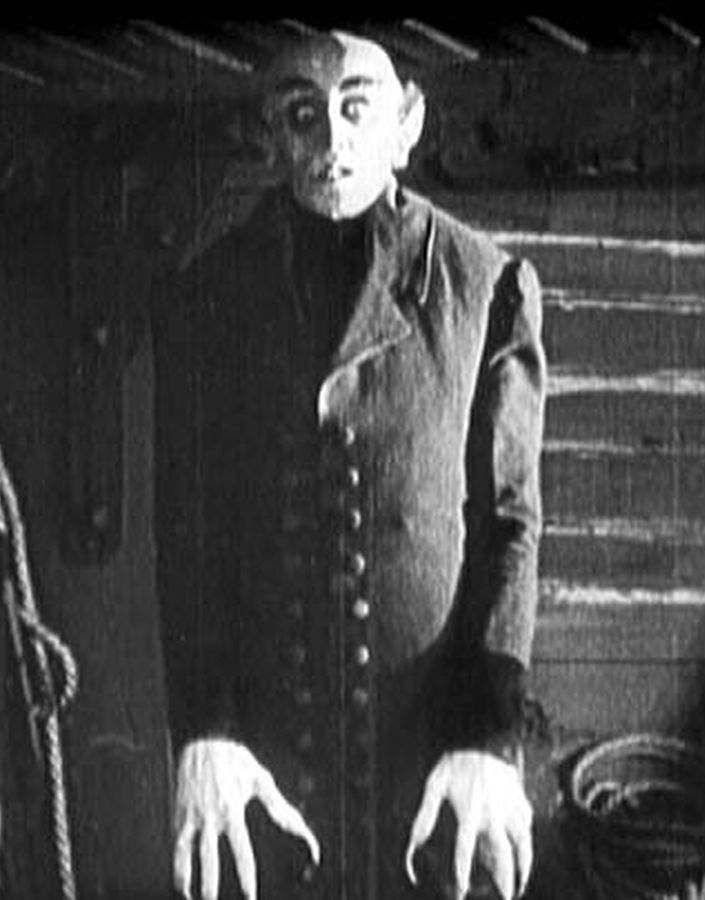Looking at vampires today, one might wonder how they went from horror to Halloween decoration and what the truly horrific roots of vampires might look like.
In their earliest days vampires were creatures of folklore, with word about them spreading through personal stories and rumors. Polidori’s The Vampyre contributed to spreading the word of the vampire, but only after Bram Stoker published the novel Dracula did vampires come fully into the public consciousness. Not everything about them was yet concrete, though.
Released 25 years after Dracula, Nosferatu: A Symphony of Horror helped to modernize the image and representation of the vampire. A German film unofficially adapting Stoker’s book, Nosferatu centers on an estate agent selling a house in the fictional town of Wisborg, Germany to Count Orlok in Transylvania.
When this young estate agent, named Thomas Hutter, travels to Transylvania, the locals cower at the mention of Orlok’s name, and the people he is traveling with refuse to get too close to Orlok’s castle.
It is these little details that truly make up the horror of the film. Throughout Nosferatu, very little actual blood is shown. It is Hutter’s proximity to death that makes it unnerving, and the impending arrival of Orlok as he makes his way to Wisborg in the film’s third act.
Nosferatu relies heavily on atmosphere and the unnatural movement of the titular vampire. It’s a masterclass in classic horror, before the horror film industry became dominated by gore and the jumpscare.
The film became an instant cult classic and endures today despite the best efforts of the Stoker estate. Many of the modern vampire tropes originated in Nosferatu, including their weakness to sunlight, which had never appeared in Dracula.
Its legacy is woven throughout vampire culture, and it has secured a place in the horror movie hall of fame.

